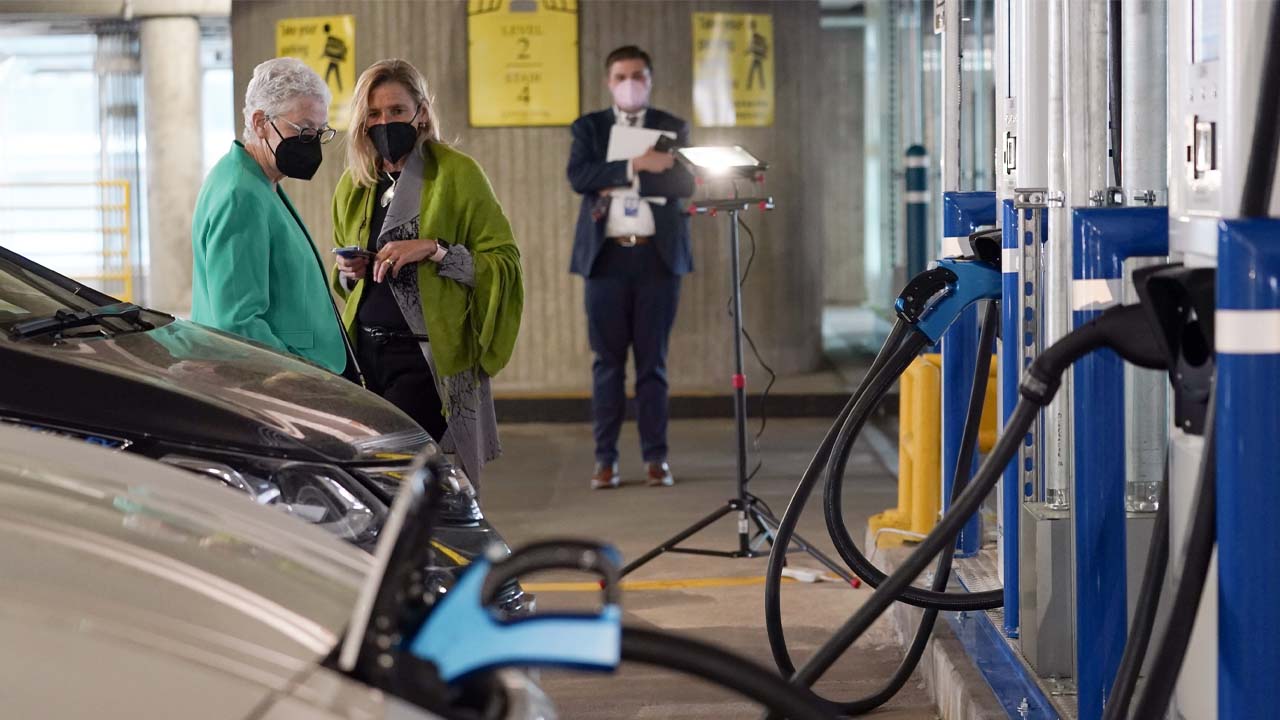Auto Dealerships Increase Pressure Against EV Sales Quotas

Table of Contents
Financial Concerns Driving Dealer Resistance
Dealerships often cite lower profit margins on EVs compared to gasoline-powered vehicles as a primary concern regarding EV sales quotas. This financial pressure is a key driver of their resistance to increased targets.
Profit Margins and EV Sales
-
Lower maintenance revenue: EVs require less frequent servicing due to their simpler mechanical components. This directly impacts the revenue streams dealerships rely on from parts and service departments, a significant source of profit for traditional dealerships. The reduced need for oil changes, brake pad replacements, and other routine maintenance significantly cuts into this revenue.
-
Higher upfront investment: Dealerships may need significant investment in charging infrastructure, specialized EV technician training, and updated service equipment. This capital expenditure can be substantial and adds financial pressure, especially for smaller dealerships. The return on investment (ROI) for these upgrades is uncertain, especially with fluctuating EV sales.
-
Inventory challenges: Managing EV inventory can be more complex due to supply chain issues, longer lead times from manufacturers, and varying consumer demand for specific EV models. Accurate forecasting of EV sales is challenging, leading to potential inventory holding costs and potential losses on unsold vehicles.
Lack of Government Support and Incentives
Dealerships argue that insufficient government support and incentives hinder their ability to profitably sell EVs and meet increasing EV sales quotas. They feel burdened by the increased responsibility without commensurate support.
-
Insufficient consumer incentives: Government rebates and tax credits may not be enough to offset the higher initial cost of EVs for consumers, making them less attractive compared to gasoline-powered vehicles. This reduces consumer demand and places pressure on dealerships to move inventory.
-
Lack of infrastructure investment: Insufficient investment in charging stations limits EV adoption and dealership profitability. A lack of widespread, reliable charging infrastructure leads to "range anxiety" among potential buyers, hindering sales and creating a significant obstacle for EV adoption.
-
Bureaucratic hurdles: Complex regulations and paperwork surrounding EV sales add to operational costs and administrative burden. The complexities involved in navigating incentives, reporting requirements, and compliance can significantly increase operational costs for dealerships.
Sales Training and Infrastructure Limitations
The transition to EVs also presents significant challenges related to sales staff expertise and charging infrastructure. These issues contribute to dealerships' resistance to higher EV sales quotas.
Lack of Sales Staff Expertise
Many dealerships lack adequately trained sales staff to effectively market and sell electric vehicles. This lack of expertise contributes to lower sales volumes and makes it harder to meet aggressive quotas.
-
Specialized knowledge required: Understanding EV technology, charging infrastructure, battery technology, government incentives, and the differences between various EV models is crucial for effective sales.
-
Need for dedicated training programs: Dealerships need access to comprehensive training programs to equip their staff with the necessary knowledge and skills to sell EVs confidently.
-
Resistance to change: Some sales staff may resist adapting to new selling strategies for EVs due to a lack of familiarity or perceived difficulty in understanding the technology.
Insufficient Charging Infrastructure
The lack of widespread charging infrastructure is a major barrier cited by dealerships hindering the sales of EVs and contributing to their reluctance to increase EV sales quotas.
-
Limited range anxiety: Consumer concerns about range and charging availability hinder EV sales, a key factor dealerships must address. The fear of running out of charge is a significant deterrent for many potential buyers.
-
Investment in charging stations: Dealerships face significant costs associated with installing and maintaining EV chargers on their premises. This investment can be substantial and adds to the overall cost of selling and servicing EVs.
-
Lack of standardization: Inconsistent charging standards across different EV models create confusion and deter buyers. The lack of universal standards makes it difficult for consumers to easily charge their vehicles, further contributing to range anxiety and resistance to EV adoption.
The Impact of EV Sales Quotas on the Automotive Industry
The pressure against EV sales quotas has significant implications for the automotive industry and the broader transition to sustainable transportation.
Slowing Down the Transition to EVs
Dealer resistance could significantly slow the overall adoption of EVs, delaying the environmental benefits associated with reduced carbon emissions and improved air quality. This resistance directly impacts the progress of achieving climate goals and reducing reliance on fossil fuels.
Potential for Market Disruption
The conflict between manufacturers and dealerships could lead to market disruptions and instability. This conflict can manifest in various ways, including reduced investment in EV infrastructure, slower development of new EV models, and potential price increases for consumers.
Increased Costs for Consumers
The added costs faced by dealerships due to the transition to EVs might be passed on to consumers, increasing the price of EVs and making them less accessible to a wider range of buyers. This increases the already significant financial barrier to EV ownership.
Conclusion
The push for increased EV sales quotas is creating significant tension within the auto industry, with dealerships expressing strong concerns regarding profitability and infrastructure limitations. Addressing these issues through government support (including expanded consumer incentives and infrastructure investment), industry collaboration (including shared training programs and standardized charging solutions), and comprehensive training programs is crucial for a successful transition to electric vehicles. Without finding solutions to the challenges highlighted, the goal of widespread EV adoption, and the crucial reduction of carbon emissions tied to it, will remain elusive. We need to work together to alleviate the pressure against EV sales quotas and ensure a smooth transition to a sustainable future. Understanding the challenges faced by dealerships is vital in developing effective strategies to overcome resistance and accelerate the adoption of electric vehicles and the positive impact of increased EV sales targets.

Featured Posts
-
 At And T Challenges Broadcoms Extreme Price Increase On V Mware
Apr 24, 2025
At And T Challenges Broadcoms Extreme Price Increase On V Mware
Apr 24, 2025 -
 Credit Card Industry Faces Headwinds As Consumer Spending Slows
Apr 24, 2025
Credit Card Industry Faces Headwinds As Consumer Spending Slows
Apr 24, 2025 -
 Metas Future Under The Trump Administration Zuckerbergs Challenges
Apr 24, 2025
Metas Future Under The Trump Administration Zuckerbergs Challenges
Apr 24, 2025 -
 Exclusive High Rollers John Travolta Action Movie Poster And Photo Preview
Apr 24, 2025
Exclusive High Rollers John Travolta Action Movie Poster And Photo Preview
Apr 24, 2025 -
 Chinas Impact On Bmw And Porsche Sales Are Other Automakers Facing Similar Issues
Apr 24, 2025
Chinas Impact On Bmw And Porsche Sales Are Other Automakers Facing Similar Issues
Apr 24, 2025
